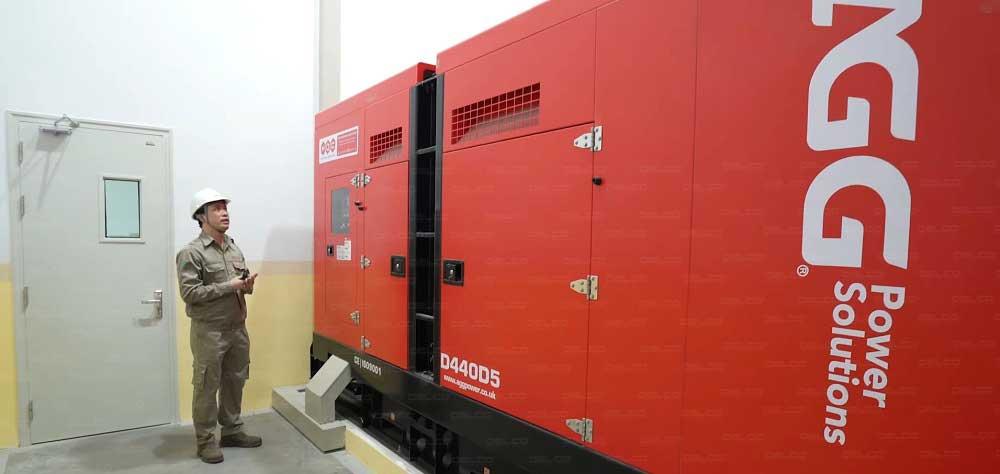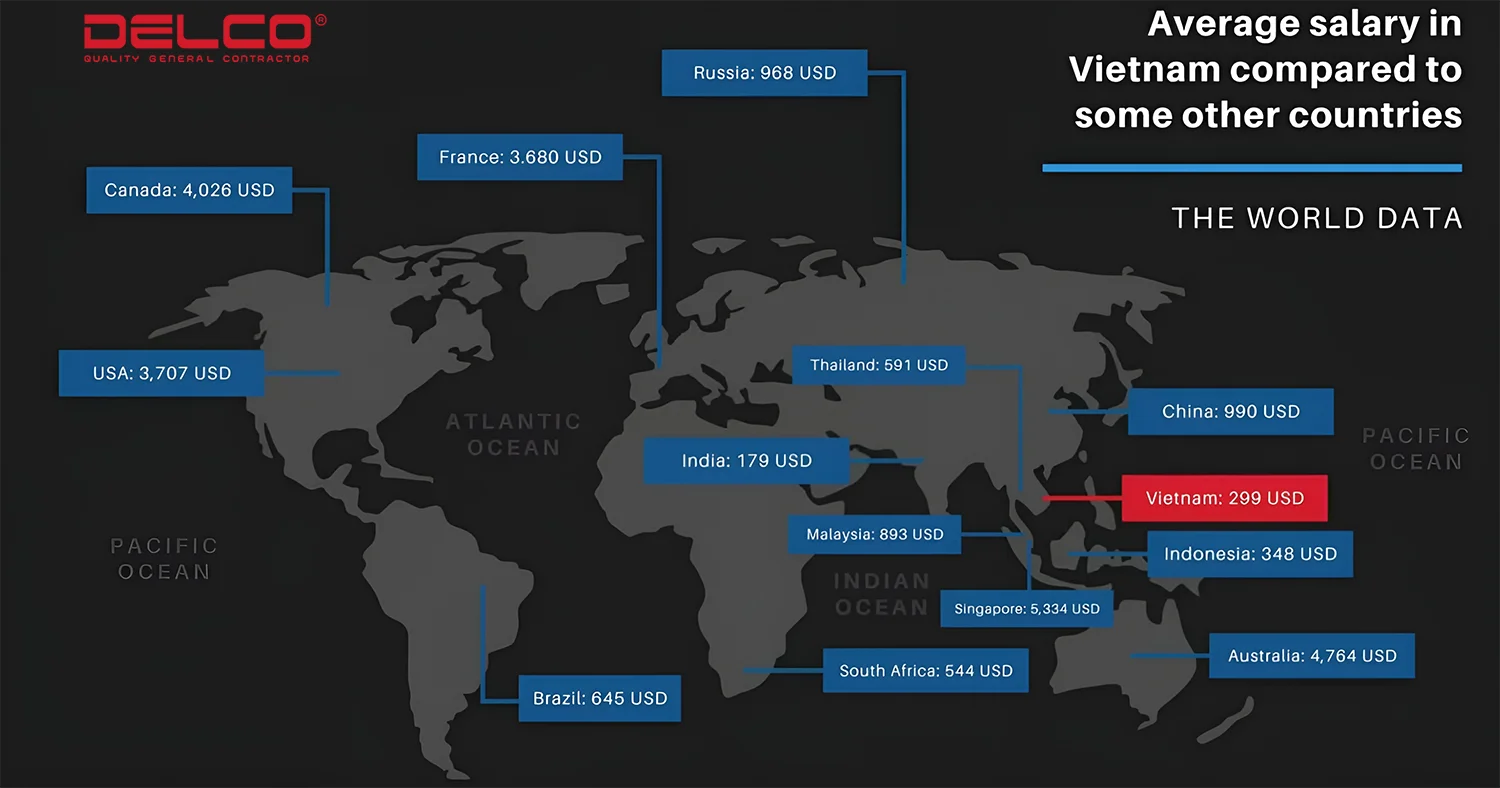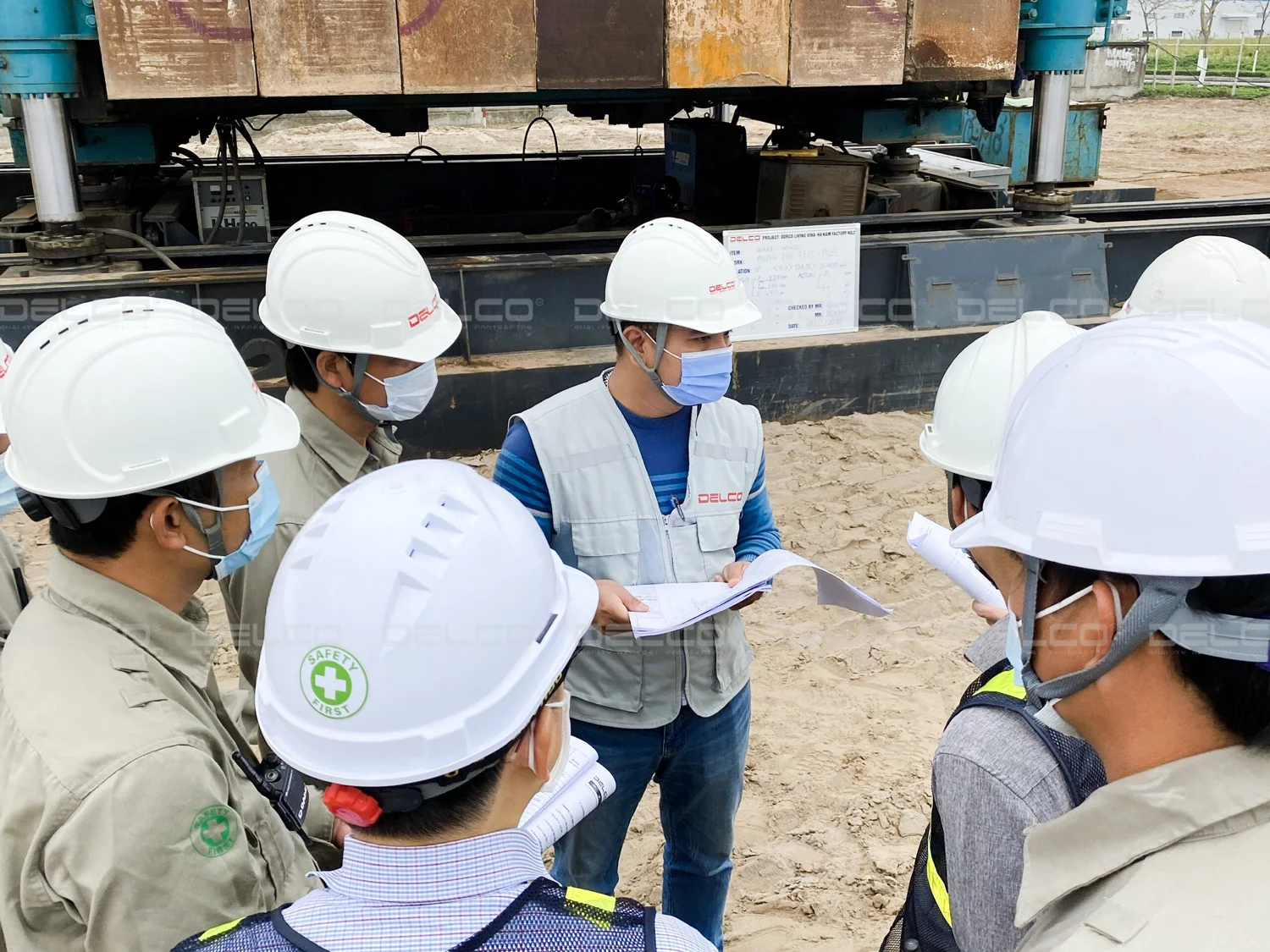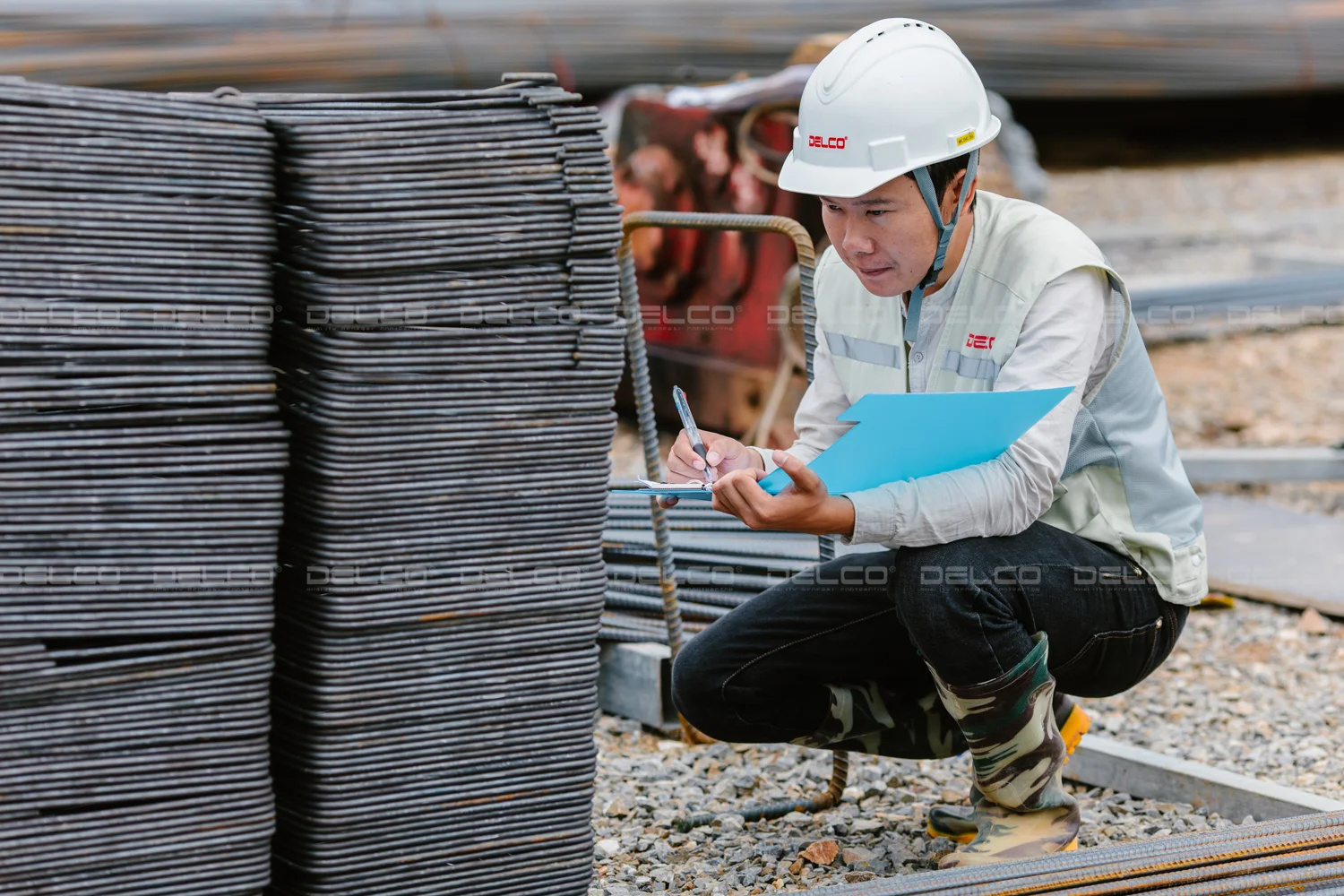The electrical system is one of the core systems of the plant, taking on the role of transmitting and distributing electricity for the entire production process. In the process of designing and constructing industrial electrical systems, the technical, safety and optimal criteria for production must always be top priority.
Electrical systems in industrial plants
Heavy current system
The heavy current system of the industrial plant consists of the main systems:
- Transformer stations, medium and low voltage cabinets play the role of carrying electricity from large capacity lines, changing power from medium and high voltage lines into standard 1-phase 220V or 3-phase 380V power sources commonly used in factories.
- The generator system backs up electricity for the plant when the grid system has a problem, ensuring the continuous production of the plant.The switch plays a role in ensuring stable, uninterrupted production when the power supply is flickering.

Construction of a 400 KVA continuous capacity generator at a Korean commercial printing factory built with DELCO as the General Contractor
- The distribution cabinet system has the function of dividing power sources into separate circuits, electricity will be distributed to each area of machinery and equipment in the factory. In addition, the distribution cabinet helps protect the switchgear and isolates the electrical equipment from the operator to limit the problems that occur during use.
- Electrical cabinet systems control machines, industrial production line that are responsible for powering engines, controlling engines to start or end the working cycle, monitoring and protecting motors from problems.
- Industrial socket systems in factories are a bridge to share power from the power supply to electrical appliances, often equipped with additional waterproof covers, waterproof jackets and fuses to ensure safety in industrial environments.
- The grounding system helps to limit the problem of electricity leakage, ensuring the safety of employees working at the factory. The system usually consists of electrodes buried underground and grounding wires connected from electromechanical infrastructure, machinery and equipment that use electricity, which conducts unwanted currents into the ground.
- The lightning protection system transmits the current generated by lightning strikes to the ground safely, prevents the lightning from being transmitted into the industrial plant power system causing damage on a large scale..
Light current system
Light current systems account for a relatively small proportion, about 10-20% in industrial plant power systems, but play an important role in operating high-tech equipment, bringing great utility to users. Light current system in industrial factories includes:
- LAN and Internet systems allow connecting computers between departments, machines and lines in the factory. Through the internal network system, the factory can use the telephone switchboard, surveillance camera system, printer…
- The system of switchboards and telephones is a tool to help communicate between departments and production areas faster and easier.
- Camera system helps to ensure factory security, especially in industrial parks and large factories.
- The public speaker system makes it easier for factory managers to make announcements and give out information to employees, especially in the factory environment with a lot of engine noise and large production space.
- Access control system including fingerprint time attendance system, Face ID system to monitor factory security and order.
Factory lighting system
The lighting system in the industrial factory includes:
- The flexible lighting system is designed and installed reasonably, ensuring effective lighting for production;
- The emergency lighting system, or the exit light system, is designed and installed in accordance with Viet Nam’s fire protection standards..
See more: Factory M.E.P System
Electrical design and construction process for industrial factories
Design phase: Technical drawings determine the accuracy and safety of the system
Technical design drawings of the factory’s electrical system need to meet current Vietnamese standards:
- TCXD 16 – 1986: Artificial lighting in civil works.
- TCXD 46 – 1984: Lightning protection for constructions
- TCXD 25 – 1991: Laying power lines in houses and public buildings.
- TCXD 27 – 1991: Place electrical equipment in houses and public buildings.
- TCVN 4756-1989: Code of Practice of ground connection and “O” connection of electrical equipments
- TCXD 68-135-1995: Lightning protection for telecommunications constructions.
- TCVN 46 – 2007: Instructions for inspection and maintenance of lightning protection systems for construction works
- TCXDVN 394-2007: Safety section – Design and installation of electrical equipment
Based on the actual data surveyed as well as the requirements of the factory, the specificities of the manufacturing industry, etc., the design drawings moderately demonstrate the high-voltage power network for the factory, the arrangement of the high-voltage lines, substations, and distribution cabinets. Additionally, it accurately shows installation parameters, determines waiting points of power lines. It even calculates elevation – safe distances for machinery systems, lines, and estimates the construction progress and optimizes the methods for each construction item.
The top requirement for a complete technical drawing is to ensure electrical safety, to meet the capacity and production efficiency, and to ensure the optimal solution, reducing investment and operating costs of the factory. Good technical design drawings are a decisive factor for the accuracy and safety of the entire power system, which can limit electrical risks, increase working efficiency and prolong the life of equipment.

Construction phase: Absolute technical compliance, ensuring safety and aesthetics
During the installation of electrical systems and equipment, it is necessary to strictly comply with the manufacturer’s technical procedures and not only the current legal regulations, but also future regulations at the time of handover. It is necessary to guarantee safety criteria both in construction and in production operation, while retaining the aesthetics of the factory. In addition, smart construction solutions are also among the important requirements, helping to optimize investment costs and facilitate the expansion of the factory’s scale later.
The spindle electrodynamic cable system is considered the most important component in the construction of the factory power system. Cables need to be calculated and selected in accordance with the power capacity for all equipment and lines of the factory. Cables must be checked and ensured safety before being put into use. There must be procedures to ensure underground wires are waterproof. Cables on ladders and troughs must be properly arranged, secured with plastic wires, marked in color to make it easier to distinguish phase wires, avoid confusion when using.
In addition to electrical cables, which are traditionally used to transmit and distribute electricity, busways are now also commonly used. Busways are commonly used to transmit electricity from substations to low voltage cabinets and MSB distribution cabinets, connecting between MSB cabinets and distributing from MSB cabinets to DB cabinets or loads. Busways have better heat dispersion, better power transmission than power cable.

DELCO constructs and installs busway system for DORCO Living Vina factory in Hoa Mac Industrial Park, Ha Nam
Cable tray ladder is a support frame system commonly found in industrial factories to support and arrange a neat cable system, convenient for inspection and maintenance. The cable tray ladder must ensure the safety factor, the number of support bars on the cable tray ladder must be able to withstand the load of the cable system, the support bars must be the same and have the same height. The cable tray ladder needs antistatic paint to avoid the risk of power leakage.
Depending on the requirements of each different factory, the light current system and lighting system are also different, so as to serve the maximum production and operation needs of the factory. The level and intensity of illumination depends on the characteristics of each area in the factory, the production characteristics of each industry. Network wiring, wiring of speaker systems, cameras, lighting must always be tidy, neat and aesthetic.
Completion stage: Quality inspection and internal acceptance
Internal acceptance and quality inspection must be conducted regularly after the end of construction of each item. The quality inspection process must be transparent, with a full checklist for each system, each item. Even the smallest items such as installing switches that must be closed and shut off definitively, the lighting of the lamps must be stable, short circuit of wires and equipment, load testing for generators, shakedown and engine testing, voltage testing, etc. must be closely and rigorously inspected.

Quality inspection, internal acceptance before conducting acceptance with the investor, acceptance and inspection of electrical works with the authorities is the final and very important stage in the process of electrical construction of industrial factories. The M&E general contractor having a quality monitoring team and a strict internal acceptance process as the basis, is what guarantees safety for the quality and progress of construction.
See more: Considerations when designing and constructing the factory’s M.E.P system
See more: How to choose a reputable M&E contractor?
— The copyright of the article on the delco-construction.com website belongs to DELCO® Construction. Please do not copy or edit any images or content without the written consent of DELCO®. —





